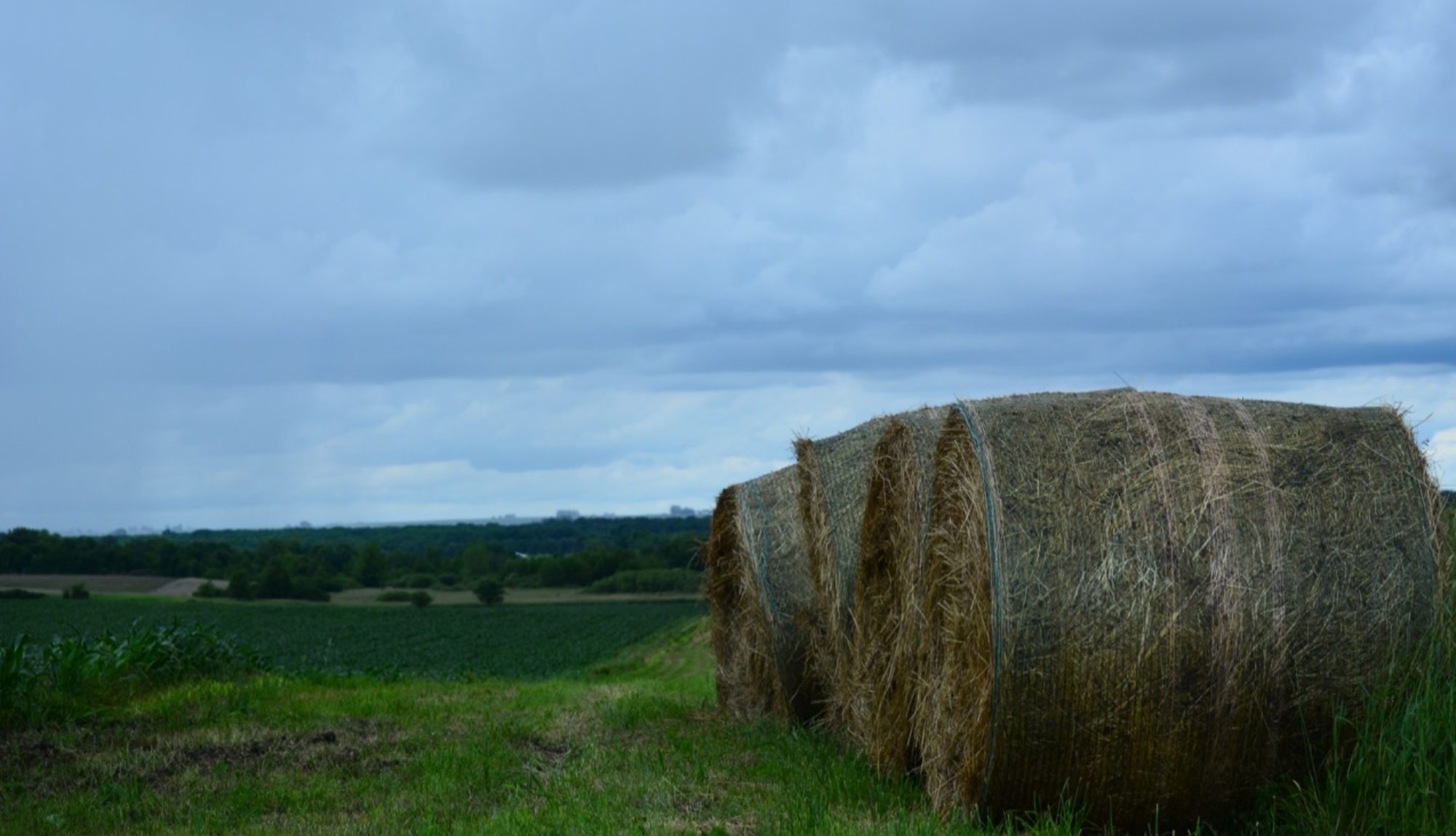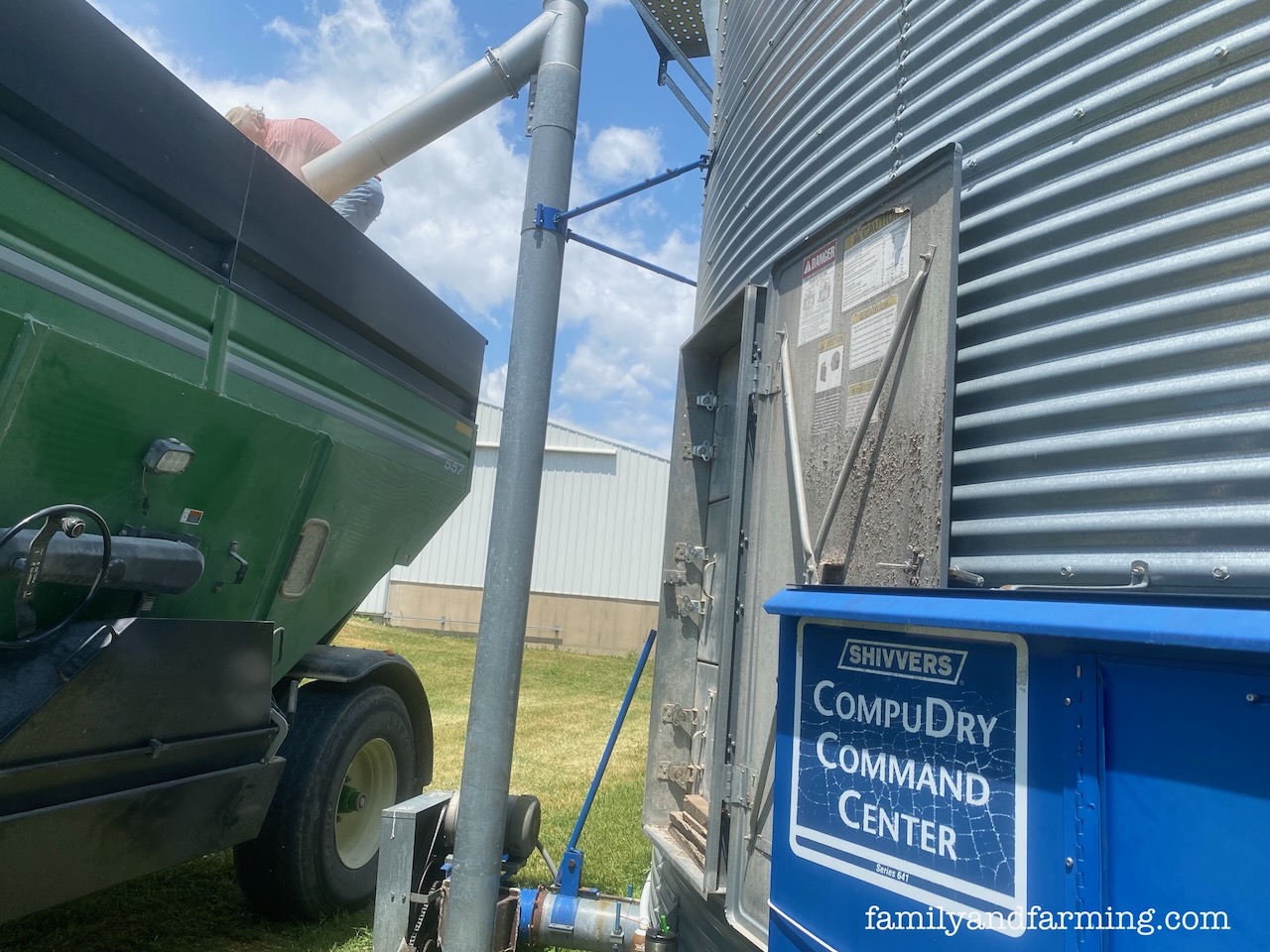I stand under the shade of a grain bin to escape the searing sun, waiting for the signal to push in a gate lever over the grain bin sump to cut off the flow to the bin’s unloading auger. I then move to the control panel to turn off the power to that unloading auger. I’m here to save my husband from having to climb in and out of the grain bin multiple times for each wagonload of grain.
We are working in tandem to unload beans from a grain bin that has a broken part inside. There might have been an installation error when parts were replaced last year. Aside from pointing fingers back and forth, the reality is the last four wagonloads (that’s 120,000 pounds of beans) have to be shoveled toward the center of the bin to clean it out before things can be fixed. (We may stand behind the installer to make sure things are properly fixed this time.) Because of the high heat, we only unload one wagonload a day.
I stand during those days stationed at the grain bin in the heat and I wait. For rain. We haven’t had rain for thirty-five days. Our last measurable rain was May 8. There were four different times it rained, but none of that rainfall was measurable. Those rains were not enough to settle the dust on the driveway. The farmyard is brown. Our crops are stressed. We are facing a possible crop failure. We desperately need rain.
According to the National Weather Service most of the Midwest is in a state of drought or severe drought. Another thing that is making the drought worse is temperatures are in the 90’s almost every day the past two weeks.
Why Grain Markets are Going Up
Grain markets are tied to many factors. Geopolitical events (The Russia/Ukraine conflict as example), the strength of the US dollar, energy policy and prices, global supply and demand, and weather. Right now, drought in the midwest is becoming a big issue, so grain markets are going up.
In the past two weeks, the grain market has been steadily rising, with increases of up to fifty cents a day. That’s exciting, except if there’s no grain to sell because of a crop failure, it doesn’t matter that prices are high. A crop failure is a loss. A very big loss.
Days of drought are now turning into weeks of drought. Farmyard grass crunches under my shoes as I walk toward the mailbox. Dust rolls from the road as trucks drive by. Corn is curling in the fields and the soybeans are languishing, stunted in their growth due to lack of moisture.

The weather forecast is dry with no rain in sight. We wait.
The next day, while I’m standing next to the grain bin running the controls, when I see clouds banking in the distance. Could it be a random rain shower the weather apps and the local news have missed? We wait.


Weeks pass. The drought gets worse. Prices go up. From the road our crops look green, but upon inspection, cornfields are starting to resemble pineapple fields, and the soybeans are short. Our only saving grace is that we rotate our crops, which creates less stress on the plants, but our fields are still a concerning sight. Rain is the only thing that will solve these problems.
Rain Predictions?
And then there’s a prediction of a 55% chance of rain in five days. Prices go down drastically. We wait.

Late on the predicted rain day the wind direction changes, the temperature drops, thunder rumbles, and clouds build. It rains! The wait is over! We receive one inch of rain! In the forty-seven days since we planted our crop, we have received 2.03 inches of rain. That’s not much. I’ve posted previously that farming is a gamble. This year is no exception.
Be Blessed!
Discover more from Family and Farming
Subscribe to get the latest posts sent to your email.

